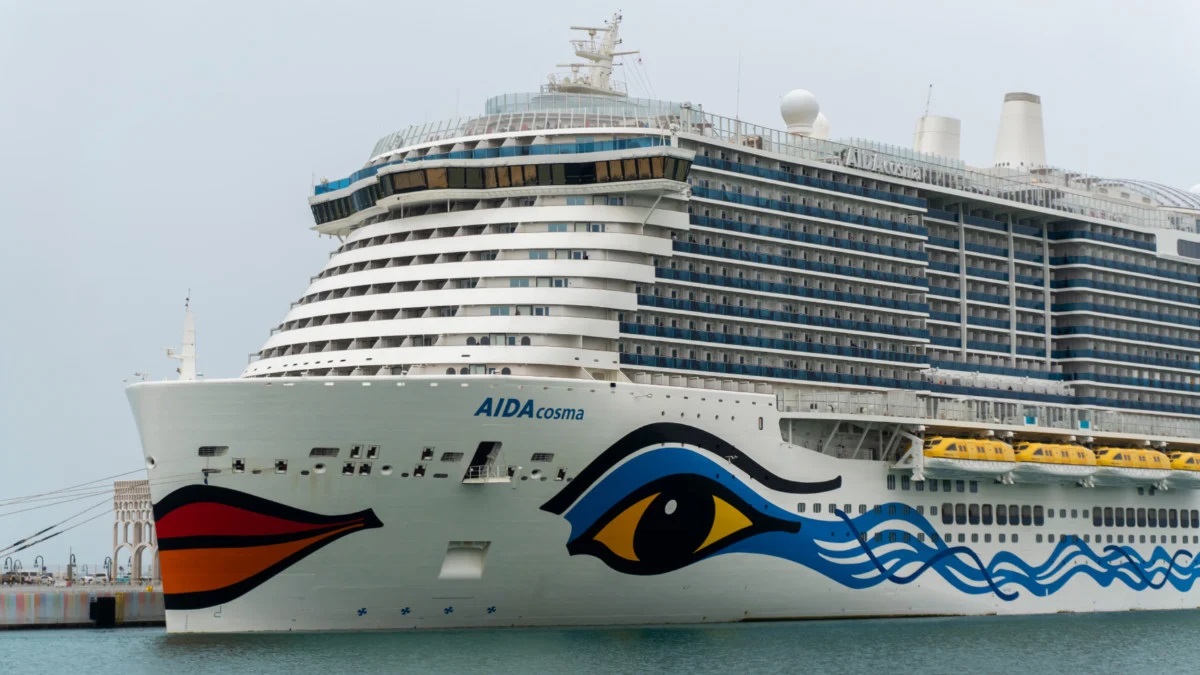
When it comes to maritime adventures and traversing the vast open waters, ships have always held a certain fascination. These magnificent vessels have played a pivotal role in shaping the course of history, facilitating trade, exploration, and even warfare. From ancient sailing ships to modern mega cruise liners, ships come in all shapes and sizes, each with its own unique story and impressive features.
In this article, we will dive into the world of ships and discover 15 fascinating facts that you may not know. From the largest ships ever built to the curious superstitions held by sailors, get ready to set sail on a journey of discovery through these incredible floating marvels.
Key Takeaways:
- Ships have been essential for exploration and trade throughout history, connecting people and cultures across the seas.
- Modern ships are marvels of engineering, offering luxury amenities and playing a crucial role in global trade and travel.
Ships have been used for thousands of years for transportation.
Since ancient times, humans have relied on ships to explore the oceans, transport goods, and connect civilizations.
The largest ship ever built is the Knock Nevis.
Formerly known as the Seawise Giant, this supertanker was over 1,500 feet long and could carry over 650,000 tons of oil.
The term “ship” traditionally refers to a vessel that can carry passengers.
Ships are often associated with luxury cruises and passenger transport, providing a means for people to travel across the globe comfortably.
The Titanic was one of the most famous ships in history.
This ill-fated British ship sank on its maiden voyage in 1912, resulting in the loss of over 1,500 lives.
Ships played a crucial role in the age of exploration.
During the 15th and 16th centuries, explorers like Christopher Columbus and Ferdinand Magellan embarked on voyages of discovery that expanded the known world.
Shipwrecks hold significant historical and archaeological value.
Exploring shipwrecks helps researchers gain insights into past civilizations, maritime technology, and trade routes.
Ships can be propelled by various means, including sails, engines, or a combination of both.
Modern ships commonly use engines powered by diesel or nuclear fuel, allowing for greater speed and efficiency.
The shipping industry is an essential component of global trade.
Ships transport almost 90% of the world’s goods, playing a vital role in connecting economies and facilitating international commerce.
The Panama Canal revolutionized ship transportation.
Opened in 1914, the canal allows ships to pass through the Isthmus of Panama, significantly reducing travel time between the Atlantic and Pacific Oceans.
There are specialized ships for various purposes, including cargo ships, cruise ships, warships, and research vessels.
Each type of ship is designed to fulfill specific functions and cater to different industries and needs.
Ships can be enormous floating cities.
Modern cruise ships boast numerous amenities, including restaurants, theaters, swimming pools, and even ice-skating rinks.
The shipbuilding industry has evolved significantly with technological advancements.
Today, ships are constructed using sophisticated engineering techniques, computer-aided design, and advanced materials to enhance performance and safety.
Ships have witnessed some of the most important historical events.
From battles and conflicts to discoveries and expeditions, ships have been witnesses to pivotal moments in human history.
Maritime trade routes have shaped civilizations and led to cultural exchange.
The Silk Road and the Spice Routes are examples of historic trade routes that facilitated the exchange of goods, ideas, and cultures across continents.
Ships can have a significant impact on the environment.
Efforts are being made to develop more sustainable and eco-friendly ship designs, including the use of alternative fuels and improved waste management systems.
Conclusion
In conclusion, ships have played a significant role throughout history and continue to be a vital part of global trade and transportation. They come in various shapes and sizes, each serving a specific purpose. From massive cargo vessels to luxurious cruise liners, ships have evolved to meet the needs of our ever-changing world.We’ve explored 15 fascinating facts about ships, including their construction, navigation systems, and historical significance. It is awe-inspiring to recognize the engineering marvels behind these floating giants and the tremendous effort required to keep them afloat.Whether you have a fascination for maritime history or are simply curious about the wonders of the sea, understanding the intricacies of ships can provide a deeper appreciation for their impact on our lives.So, the next time you see a ship sailing on the horizon, take a moment to appreciate the extraordinary feats of human ingenuity that have made these vessels possible.
FAQs
Q: How does a ship float?
A: A ship floats due to the principle of buoyancy. The weight of the ship is distributed carefully as it displaces an amount of water equal to its weight, creating an upward force that keeps it afloat.
Q: How long does it take to build a ship?
A: The time it takes to build a ship can vary greatly depending on its size and complexity. Smaller ships can be built in a few months, while larger vessels may take several years to construct.
Q: What is the largest ship ever built?
A: The largest ship ever built is the Prelude FLNG (Floating Liquefied Natural Gas), owned by Shell. It measures 488 meters in length and has the capacity to produce 3.6 million metric tonnes of LNG per year.
Q: How do ships navigate at sea?
A: Ships navigate at sea using a combination of instruments, including GPS (Global Positioning System), navigational charts, radar systems, and compasses. They also rely on skilled navigators who are trained to interpret these tools and make course adjustments.
Q: Are there any eco-friendly ships?
A: Yes, there are several eco-friendly ships being developed and used today. These ships incorporate advanced technologies such as hybrid engines, solar power, and waste management systems to reduce their environmental impact.
Q: How are ships powered?
A: Ships can be powered by various sources, including diesel engines, gas turbines, or even nuclear power. The choice of propulsion system depends on the size and purpose of the ship.
Q: How do ships withstand rough seas?
A: Ships are designed to withstand rough seas through various features, including reinforced hulls, stabilizers, and ballast systems. These features help to maintain stability and reduce the impact of rough waves.
Was this page helpful?
Our commitment to delivering trustworthy and engaging content is at the heart of what we do. Each fact on our site is contributed by real users like you, bringing a wealth of diverse insights and information. To ensure the highest standards of accuracy and reliability, our dedicated editors meticulously review each submission. This process guarantees that the facts we share are not only fascinating but also credible. Trust in our commitment to quality and authenticity as you explore and learn with us.


